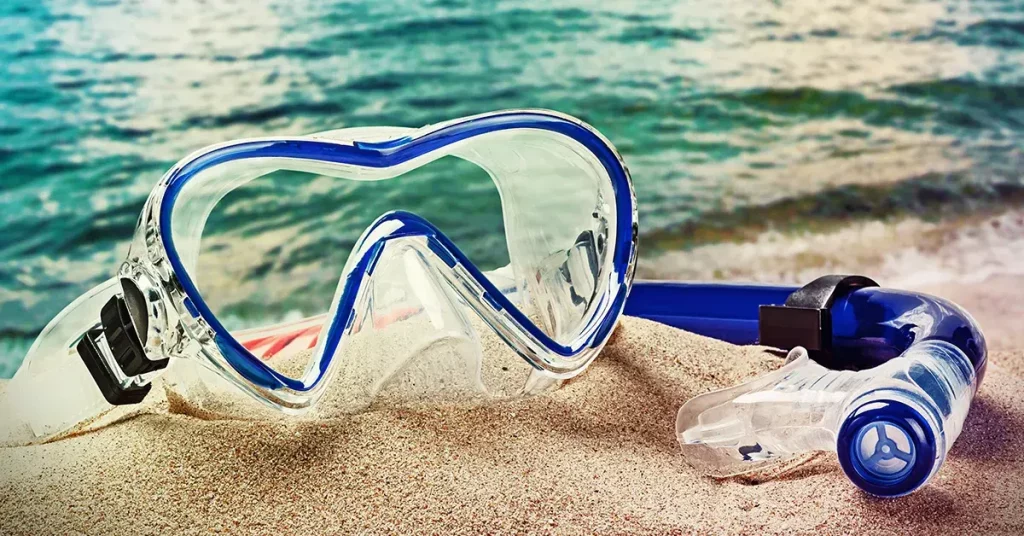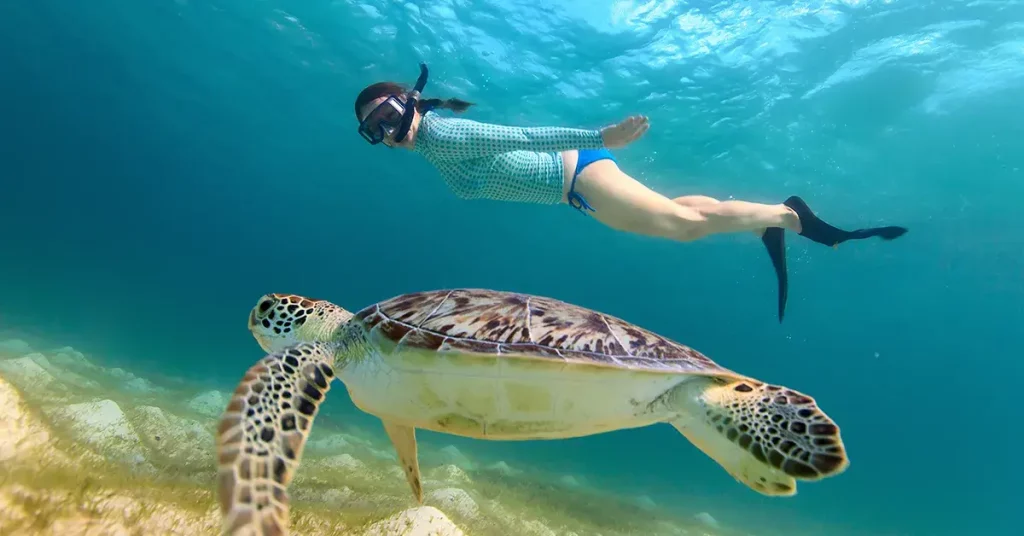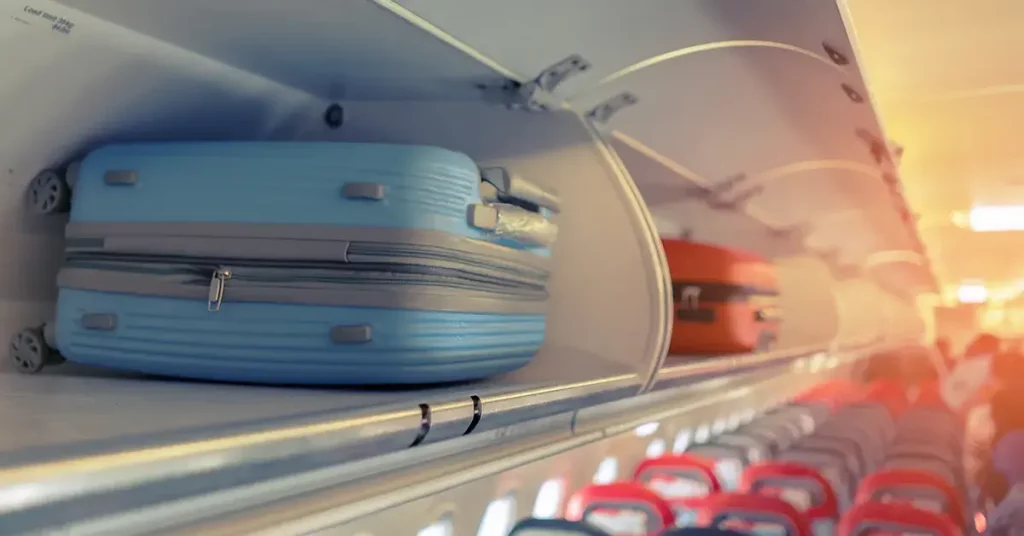During a snorkeling session, the last thing you want is for your snorkel gear to be damaged or dirty. If you don’t correctly and frequently maintain your snorkel gear, it can lead to potential issues in the future.
One of the reasons it’s so important to clean your snorkel gear is to prevent it from increasing sand, salt buildup, shell fragments, or other ocean debris. Not frequently maintaining your snorkel gear can be hazardous to your health. So, how to clean snorkel gear with mildew?
There are different ways how to clean snorkel gear with mildew and maintain it for future use. This goes for both new and used snorkel equipment. If you want to give your snorkel equipment the proper cleaning, then you’ve come to the right place! We will go over how to clean snorkel gear with mildew and tips on maintenance. Here’s our quick guide to fresh gear!
3 Tips to on How to Clean Snorkel Gear with Mildew
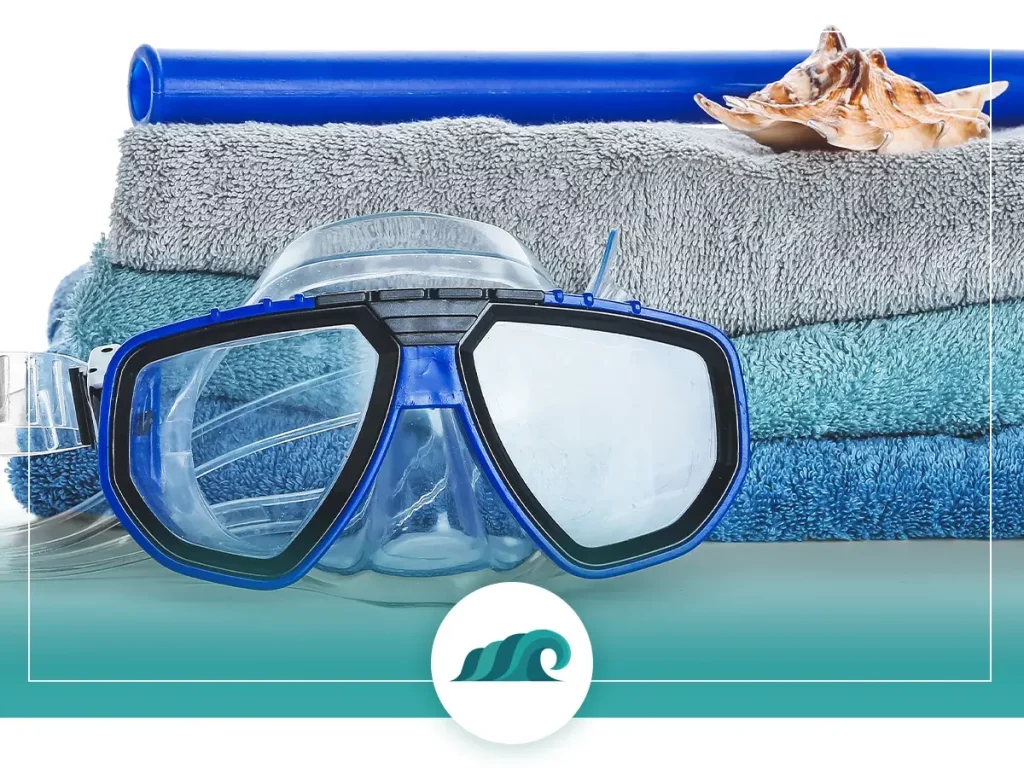
When exploring the underwater world, maintaining your snorkel gear is essential to keep it functional. Before we discuss different methods of cleaning your snorkel equipment, we will review our top three tips.
Always Check for Sand
Getting sand on or in your snorkel equipment is an unfortunate encounter many have to deal with. So, whenever you’re cleaning your snorkel gear, it’s essential to check for any clumps of sand, especially in tight crevices in your snorkel, mask, and fins.
Bleach, Detergent, or Vinegar are Safe for Snorkel
Typically, when cleaning your snorkel gear, some solutions you can use are dish detergent, vinegar, and bleach liquids. When you clean your snorkel, ensure you reach every nook and cranny to avoid grime, mold, or other debris buildups.
Baby Shampoo Helps in Defogging your Mask
Aside from using an anti-fog solution or toothpaste for your snorkel mask, believe it or not, you can also use baby shampoo. One of the reasons why you would use this to clean your snorkeling mask would be to enhance your visibility and prevent fogginess.
How to Clean Snorkel Gear with Mildew: 3 Solutions
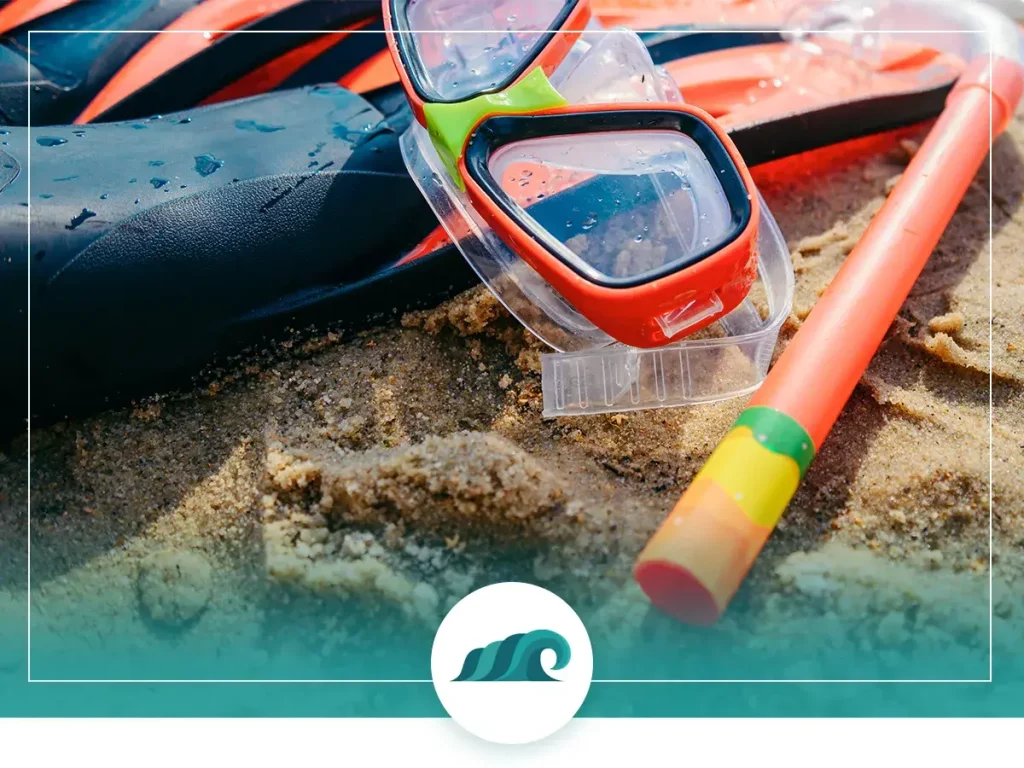
Now that you know what factors to consider when learning how to clean snorkel gear with mildew and maintaining your snorkeling gear, here we will review how to clean your snorkel, mask, and fins using the different methods that were previously mentioned.
Cleaning your Snorkel
The last thing you want is a moldy snorkel. As previously stated, there are various ways to choose when deciding how to clean snorkel gear with mildew. Below, we will go over the different solutions to use.
Materials Needed:
- Bleach (Solution #1)
- Vinegar (Solution #2)
- Dish Detergent (Solution #3)
Solution #1 Using Bleach for Snorkel
One of the primary ways to clean a snorkel is by using bleach and warm water. First, fill a large bowl or container with diluted bleach and warm water. Next, wear gloves and submerge your snorkel deep into the solution for 30 minutes, so it gets into every crevice of the snorkel tube.
It should kill bacteria and other debris inside the breathing tube during its soak. Afterward, take the snorkel tube out and rinse it in tap water. It’s essential to note that this is only for the snorkel tube and not the snorkel mouthpiece. Always have your snorkel mouthpiece soak in soapy water rather than bleach solution.
Solution #2 Using Vinegar for Snorkel
The second best tip on how to clean snorkel gear with mildew is clean your snorkel using vinegar. This is similar to cleaning it with bleach. The only difference is that you might have to leave the snorkel in the solution for an hour. Mix warm water with vinegar and submerge the snorkel in the bowl. Then, afterward, take out your snorkel to air dry.
Solution #3 Using Dish Detergent for Snorkel
Using dish detergent requires a bit more maintenance compared to the other solutions. Submerge the snorkel in warm water and dish detergent solution for 30 minutes. Then, after 30 minutes, take it out, wipe down any remaining residue and grime, and place it back in the water. Afterward, take it out and rinse the snorkel with warm water, and leave it out to dry completely.
Cleaning your Snorkel Mask
The primary way of scouring your snorkel mask is by using toothpaste and warm water. When learning how to clean snorkel gear with mildew, trying different ways to get the job done always proves to be interesting.
Materials Needed
- Toothpaste
- Soft-Bristled Toothbrush
- Washcloth
Before Use of Snorkel Mask
Now, it’s essential to be firm but gentle when cleaning your snorkel mask. First, apply a few drops of non-abrasive toothpaste onto your mask’s inside and outside surfaces. Begin to spread the toothpaste around the surfaces. If your snorkel mask has a glass lens, you can apply the toothpaste with a toothbrush. However, you can use a washcloth if you have a plastic lens.
Afterward, rinse the snorkel mask with tap water to remove any toothpaste residue. Then place it on a soft cloth and leave it out to completely dry. Using this method helps in removing mold or other bacteria from your snorkel mask.
After Use of Snorkel Mask
Fortunately, when cleaning your snorkel mask after using it, there are only minimal crevices to clean through compared to your snorkel breathing tube. You must clean your mask using warm, soapy water to remove any residue on your plastic or glass mask lens. Then rinse the soap with clean water and dry it completely using a microfiber cloth. After your snorkel gear is clean from mildew, you can always purchase a special mesh bag to store it in but keep the air flowing, but that only provides minimal protection.
Cleaning your Snorkel Fins
How to clean your snorkel fins aren’t as complex as maintaining the snorkel itself. When washing your snorkel fins with warm soapy water, gently scrub to avoid abrasions or scuff using a microfiber towel or soft cloth.
Wrap Up
It’s important to know how to clean snorkel gear with mildew. If snorkeling is going to be a hobby of yours, you’ll soon be a pro at removing mold from a snorkel mask, tube, and fins. You can use vinegar, dish detergent soap, or bleach when scrubbing your snorkeling equipment.
Even if your snorkel gear is durable, please be gentle and aware of how you maintain them. Significant damage can lead to other potential issues.

